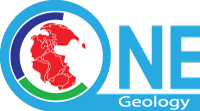7.3 GeoSciML-Portrayal feature types
Three feature types are defined. ContactView contains features that represent the mapped traces of boundaries between two geologic units. ShearDisplacementStructureView is used to represent the mapped trace of any kind of fault or shear zone that is treated as a single surface for map portrayal. GeologicUnitView contains polygon features that represent the outcrop of a geologic unit mapped on some outcrop surface called the ‘map horizon’. Example map horizons include ‘Earth surface’ (the most common map horizon for a geologic map), ‘Top of basement’, and ‘Mission-Pima pit, 6/20/1990’. Since the map horizon is not specified in each feature’s properties, it must be described in the metadata for the feature collection. Overlapping polygons representing outcrops on different horizons (e.g. ‘Earth surface’ and ‘bedrock surface’) will be represented as distinct features in different GeoSciML-Portrayal services. Each GeoSciML-Portrayal service provides geologic unit outcrop polygons, associated contacts between the units, and fault traces on a single map horizon at any particular location in the extent of the feature collection.
Section last modified: 14 June 2015
